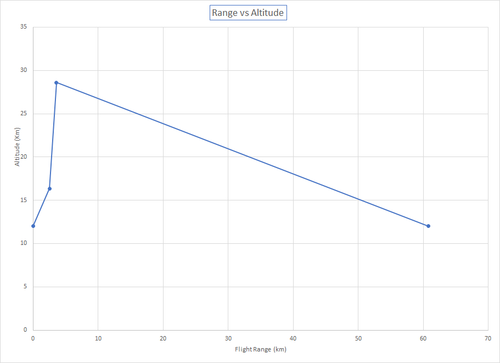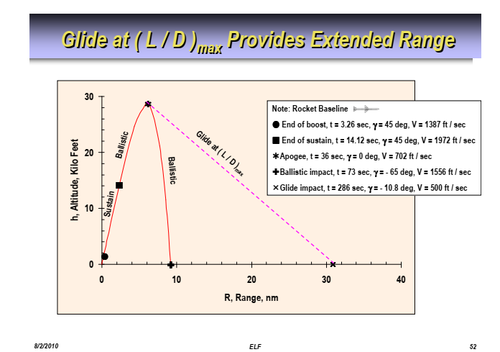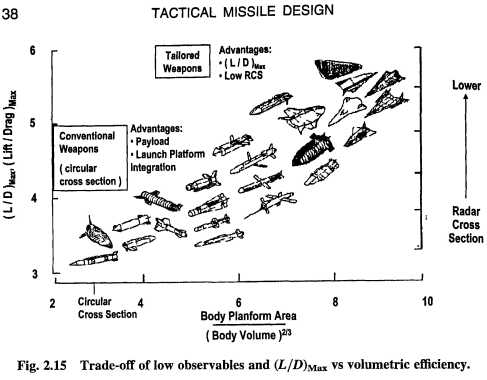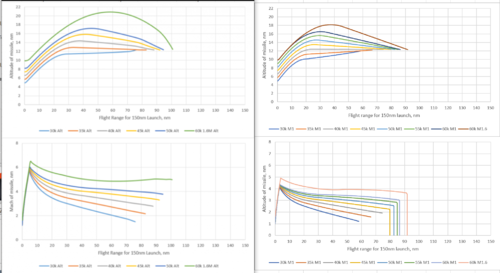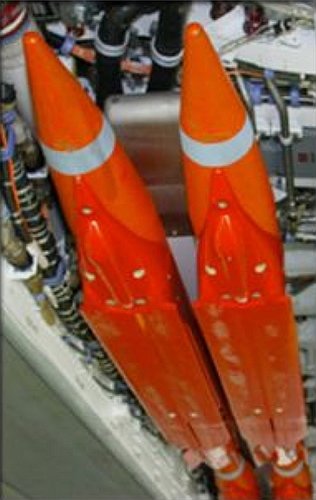I wonder how accurate paralay's load out is for the Su-57, I have seen many different versions some with four missiles and some with six missiles over the two weapons bay's it all makes it rather confusing to say the least.

I always assumed, to be on the safe side, the MRAAM loadout would be 4 pieces in total, while he has proposed a configuration with 6, 3 per bay. For this, all the three pylons would need to be in positions different to those used for carrying the bigger weapons of roughly 0.4 m diameter, of which only two units can be carried per bay. Judging by the pylons on the pictures, they are simply bolted to the plane, so, why not to make provisions for this alternative layout and allow the extended missile load? I currently see nothing that prevents his proposal from being at least a possibility.
Body lift.
The missile may have like half of its weight dedicated to rocket motor, since the dimension is quite evident (2 m class and 20 cm diameter) One can resonably guess launch weight to be at something like 88.6 Kg. Assuming 40 Kg of it dedicated to propellant, L/D of 2 (reasonable for axisymmetric missile) and boost-glide profile it can reach like 60 Km.
As you see in image is my estimate on potential trajectory, assuming Mach 0.9 launch speed and 12000 m altitude
Thanks for the analysis. Two questions:
- Wouldn't the lattice fins affect that L/D you estimate?
- Are you sure regarding that flight profile? Normal lofted trajectories I have seen look different, with a less marked climb at the beginning. For this one of yours I am left wondering what the resulting flight speeds would be.
It could be that they are meant for the WVR underwing bays (the ones that carry R-74 currently)...
Maybe, but then, why to make them shorter than the R-73, and what would be the advantage of the new missile?
However, I agree that it is tempting to imagine such weapons in the main bay... especially given the attempts to expand the magazine depth of the F-35/F-22 with double stacked launchers and the existing ability to carry two bombs in a similar layout within each half-bay...
However, if there isn't enough room for the weapons to be mounted side-by-side we'd still be talking about a doubling of the missiles carried in the main bays (i.e. from 4 to 8)...
Just entertaining theories:
Are these shorter ranged missiles the way 5G fighters are expected to fight each other in the end, or rather countermeasures? Inside an IADS longer detection ranges are to be expected, but still engagements usually do not take place at extreme distances, and even then pk of missiles against modern fighters seems quite low on far shots. A missile of this kind would allow a plane to continue its mission despite being under attack by actively destroying incoming AAMs (those that pose a risk, since high, fast flying Su-57 would by itself be difficult to shoot down). This may seriously reinforce the Su-57's air superiority capabilities, supported by very big WBs, long range, remarkable maneuverability and high/fast cruising. So to say, would allow the plane to close in on any predetermined target, relying on high speed, long legs, defensive resources and ultimately manouvering combat prowess.
For the interceptor role, a big number of missiles would also be interesting and allow to multiply the effectiveness of the existing aircraft, specially against swarm / saturation attacks.
Those clearances look questionable and overly optimistic. I highly doubt that each bay can fit 4 missiles abreast of each other.
Would you care elaborating? Maybe there is no direct comparison due to different release speeds or other reasons, but the SDBs in the bays of F-22/F-35 are really tightly packed, more even than the missiles in the proposal above, without that being apparently a problem. On top of that, we still don't know the exact measures of the bays in the Su-57.

